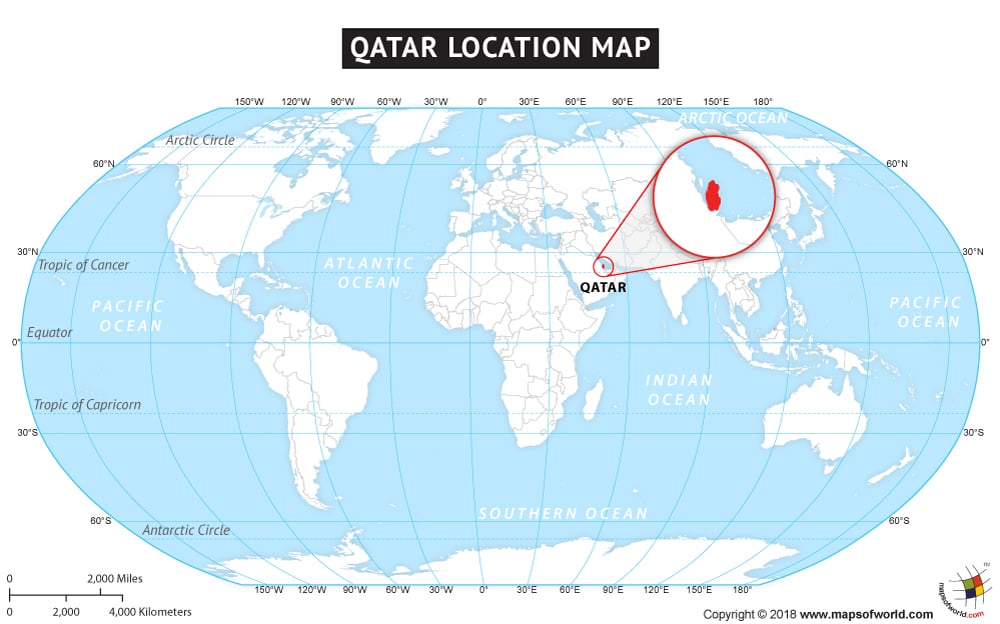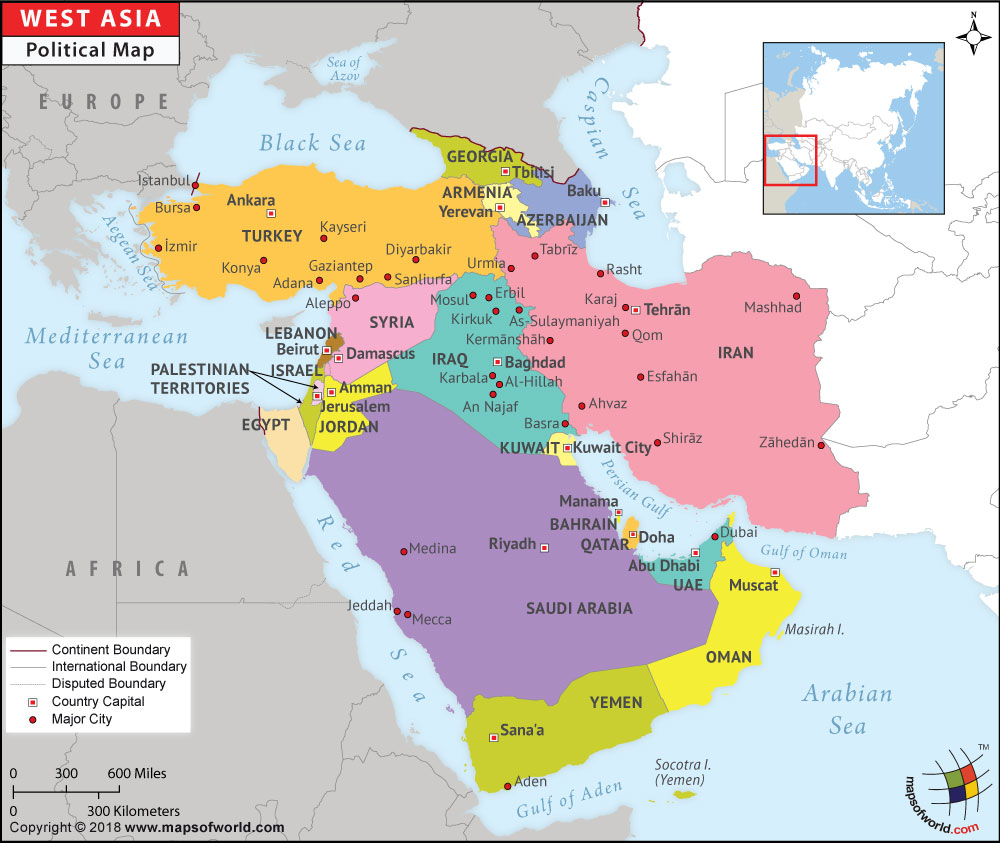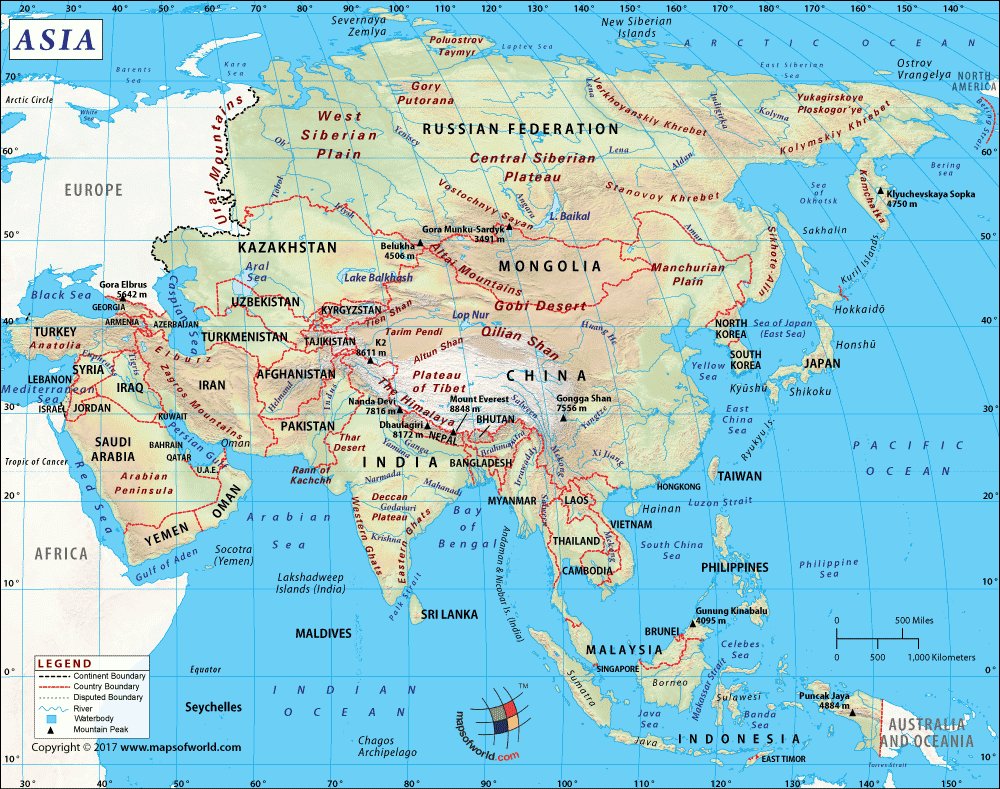What are the Key Facts of Qatar?

|
Official Name |
|
|
Continent |
|
|
Capital |
|
|
Largest City |
Doha |
|
Coordinates |
25.500000, 51.250000 |
|
Area |
4,471 sq. mi ( 11,581 sq. km) |
|
Land Boundaries |
54 mi (87 km) |
|
Coastline |
350 mi ( 563 km) |
|
Currency |
Riyal (QAR) |
|
Neighboring Countries |
Saudi Arabia, Bahrain |
|
Population |
2,641,669 (2017 est.) |
|
Official Languages |
Arabic |
|
Major Religion |
Islam |
|
National Day |
18 December (National Day) |
|
National Anthem |
“Al-Salam Al-Amiri” |
|
Form of Government |
Hereditary monarchy |
|
Emir |
Tamim bin Hamad |
|
Prime Minister |
Khalid Bin Khalifa Bin Abdulaziz Al Thani |
|
GDP per capita (PPP) |
$ 126,597.6 (World Bank, 2018) |
|
GDP per capita (nominal) |
$ 69,026.5 (World Bank, 2018) |
|
HDI |
0.856 (2017), Rank: 37 |
|
Literacy Rate (%) |
93.46 % (UNESCO, 2017) |
|
Space Agency |
NA |
|
Military Expenditure Ranking |
NA (SIPRI, 2017) |
|
No. of Olympic Medals |
5 (as of 2018) |
|
Driving Side |
right |
|
Calling Code |
+974 |
|
Time Zone |
UTC+3 (AST) |
|
Internet TLD |
.qa |
Where is Qatar?
Qatar is a western Asian country. The Qatar Peninsula is located on the Arabian Peninsula’s northeastern coast, and this Western Asian country shares its borders with Saudi Arabia to the south and the Persian Gulf. An inlet of the Persian Gulf called the Gulf of Bahrain separates Qatar from Bahrain.
What is the Geography of Qatar?
Qatar is spread across a total area of 11,581 sq. km (4,471 sq. mi), out of which 11,581 sq. km (4,471 sq. mi) is land and 0 sq. km (0 sq. mi) is water. It has an 87 km (54 mi) long land boundary, which it solely shares with Saudi Arabia. There is a 563 km (350 mi) long coastline.
The terrain in this Middle Eastern country mostly consists of a flat and barren desert. While Tuwayyir al Hamir is the highest elevation point in the country at 103 m (338 ft), the lowest elevation point is the Persian Gulf at 0 m (0 ft). The mean elevation of Qatar is 28 m (92 ft).
Some of the major mountains in the country are Ḩazm al Masḩabīyah, Abraq Farhūd, Abū al Qarāqīr, Jabal Marmī, Niqyān Musay’ īd, Saylayn, and Qarn Abū Wā’il. There are no permanent rivers in Qatar. However, many prominent wadis (dry river valleys where intermittent water flow takes place during the rainy season) are there. Some of them are Wadi Debayan, Wadi Al Banat, Wadi Lusail, and Wadi Asmah.
Most of the landform in Qatar is made up of rocky and sandy plains. Low hills punctuate the west and the central landscape. In the southeastern region of the country, massive dunes are found. Along with the western coastal areas, a few salt pans can be found. The Hawar Islands are used as oil-loading terminals from the western oil fields.
What is the Climate of Qatar?
Qatar has a desert climate, characterized by a sunny and scorching summer season and a very mild winter season. A uniform climate is found in the country, thanks to the small size and flat landscape. Two types of seasons are found in Qatar: hot and cold seasons. The hot season starts in April and continues until October while the colder season lasts for three months from December to February. A distinguishingly hotter period persists from May to mid-October. There are two transitional months: March and November. During these months, the weather remains warm but without any excesses.
A moist wind blows from the northwest direction. It blows more frequently in the summer season, and another hot and dry wind blows across the year from the south. It blows predominantly in springtime, increasing the temperature to around 30 °C (86 °F) during winter and about 40 °C (104 °F) or above during April-October. The relative humidity gets lowered drastically when this hot/dry wind blows. This wind can also raise dust/sand storms.
During winter, the rainfall level is extremely low, which amounts to less than 100 mm (4 in) per year. During springtime (March-May), some rainfall takes place. Rain doesn’t occur during the summer. The average temperature lows usually hover around 14-17 °C (57-63 °F), and the average temperature highs hover at about 22-25 °C (72-77 °F). Especially in January, some windy days can prevail. During this time, the midday temperature can be around 15-16 °C (59-61 °F), and at night, it can be below 10 °C (50 °F).
The season of summer (June-August) remains very hot with the highs reaching around 42-43 °C (108-109 °F) and lows hovering about 30-32 °C (86-89 °F). During the scorching and dry days, the daytime temperature can go way above 40 °C (104 °F), sometimes reaching up to 45-47 °C (113-117 °F). Mid-November to mid-March is the best time to visit Qatar.
What is the Economy of Qatar?
Qatar is one of the wealthiest countries in the world, thanks to the rich sources of oil and natural gas available in the country. In 2018, the nominal GDP increased at a rate of 1.8% to reach US$192.009 billion. Qatar had a positive balance of trade of US$30.7 billion in 2017, thanks to the export value of US$52.3 billion and import value of US$21.6 billion.
Some of the main export items are petroleum gas, crude petroleum, raw aluminum, ethylene polymers, and refined petroleum. The main import items of Qatar are planes, helicopters, spacecraft, recreational boats, jewelry, gas turbines, and cars. The unemployment rate had come down from 1.69% in 1993 to 0.14% in 2018. Despite its riches and its people having one of the highest per capita incomes, there is massive inequality in Qatar. The wealthiest section earns 13 times more than the poorest.
What is the Transportation System of Qatar?
Qatar has a 7,039 km (4,374 mi) long roadway. The main seaports of the country are Musay’ id, Doha, and Ra’s Laffan. There are 140 merchant marine ships in the country. Ras Laffan is used as the leading LNG terminal of Qatar. Over six airports are present in Qatar, out of which four have paved runways, and two have unpaved runways.
What International Organizations is Qatar part of?
WTO, UN, UNESCO, WHO, NAM, ABEDA, AFESD, AMF, CAEU, CD, FAO, G-77, GCC, IAEA, IBRD, ICAO, ICRM, IDA, IDB, IFAD, IFC, IFRCS, IHO, ILO, IMF, IMO, IMSO, Interpol, IOC, IPU, ISO, ITSO, ITU, LAS, MIGA, OAPEC, OIC, OIF, OPCW, OPEC, PCA, UNCTAD, UNIDO, UNIFIL, UNWTO, UPU, WCO, WIPO, WMO, CICA (observer), EITI (implementing country), ICC (national committees), IOM (observer), OAS (observer)
Related Links:



